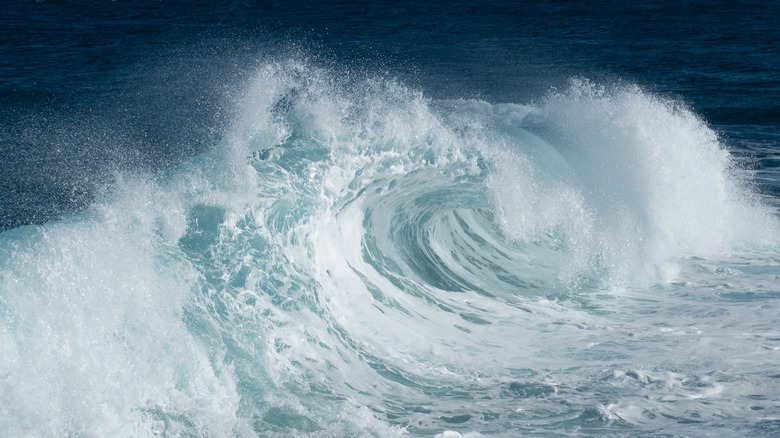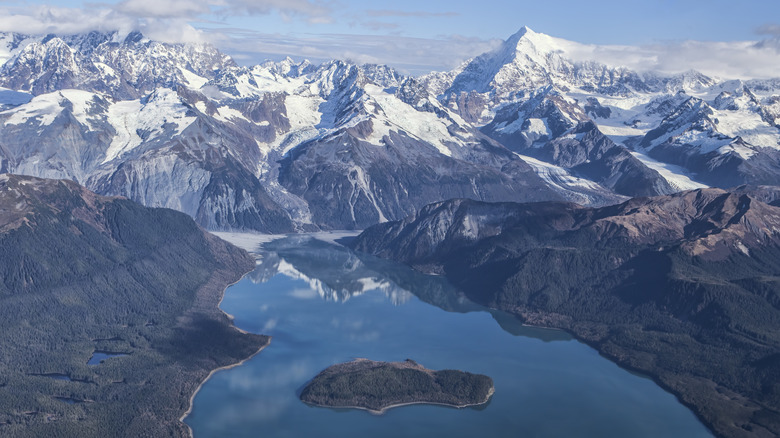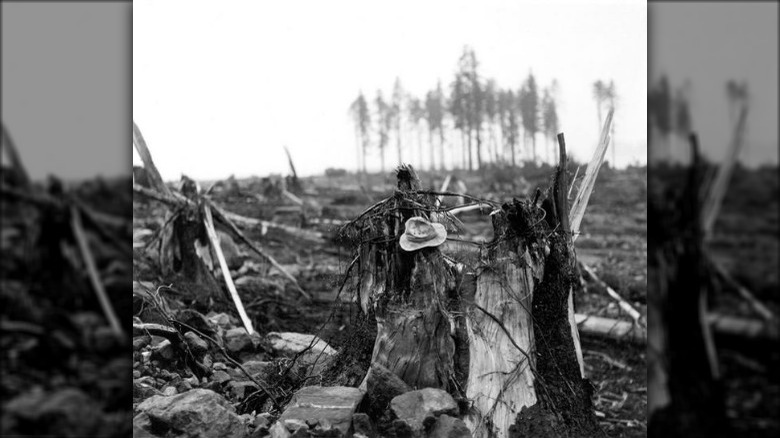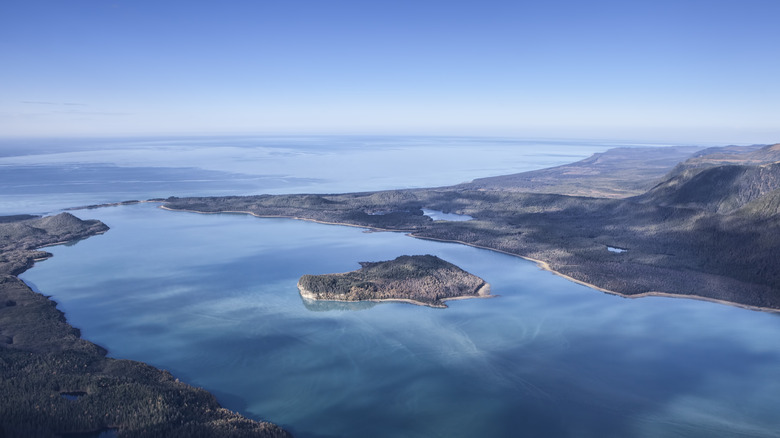The Truth About The Biggest Tsunami Ever Recorded
The average disaster movie portrays tsunamis as gigantic walls of ocean water that obliterate cities and towns in an instant, and rightly so. Tsunamis are indeed massive waves of ocean water that cause tremendous destruction and death. A naturally occurring phenomenon, tsunamis aren't influenced by the wind or the moon, as typical ocean water tends to be. Instead, tsunamis are an after-effect of a major natural disaster.
According to the National Ocean Service, tsunamis — a word that blends the Japanese words for "harbor" and "wave" — are most often caused by either an underwater volcanic eruption or an earthquake. The depth of the ocean where the tsunami originates determines how fast it will travel across the water and how high the waves will crest. The deeper the water, the faster the tsunami moves, sometimes clocking speeds close to jet planes,or 500 miles per hour.
The largest tsunami ever recorded happened in 1958 in Lituya Bay, Alaska. A fjord — a long narrow body of water generally located between high cliffs in the southeastern portion of the state — Lituya Bay was discovered in 1786 by the French explorer Jean-François de Galaup La Pérouse. Due to its geographical location, the area is naturally prone to earthquakes and high tides that, when combined, make the perfect recipe for tsunamis to happen.
In Lituya Bay, there was no hiding from the wave
Given the geographical characteristics of Lituya Bay, the 1958 mega-tsunami was not the first event of its type in the area. In 1899, an earthquake in Lituya Bay caused a tsunami that killed five people and destroyed an indigenous village. Nearly 40 years later, in 1936, another tsunami swallowed the small bay yet again. However, the mother of all tsunamis was yet to come.
On July 9, 1958, a 7.8 earthquake rocked Alaska along the Fairweather Fault, per NASA's Earth Observatory. The earthquake struck after 10 p.m. that night, and it was so intense that the inlet feeding into the bay moved 20 feet in the opposite direction of the shore (via Earth Magazine). Meanwhile, the earthquake caused a rockslide that forced over 90 million tons of rock into the water. Vegetation was ripped from the root at elevations of more than 1,700 feet, and millions of trees were uprooted (per The Daily Astorian).
Among the survivors was mountain climber Howard Ulrich, who witnessed the event with his 7-year-old son in a fishing boat on Lituya Bay. Ulrich described the more than 100-foot wave as a "wall of water." Ulrich told The Daily Astorian that it was as if "you're looking at death, and this was exactly my first thought." At that moment, Ulrich reportedly tossed his young son a life preserver and said, "Son, start praying. ... God what an awful sight ... something like the end of the world."
Despite the destruction, few fatalities were reported
As mentioned, the damage to the surrounding Lituya Bay area was extensive (pictured). Despite all that destruction, though, only five people died in the catastrophe. According to the Western States Seismic Policy Council (WSSPC), three individuals were killed when the first initial wave of water drove Khantaak Island into the bay, 100 feet below sea level. Meanwhile, two others died as the massive wave sank their ship stationed in the bay.
Miraculously, however, two people were later rescued from the fjord as they clung to a dinghy after their boat sank into the water. Though the Lituya Bay tsunami is the largest in history, the deadliest tsunami on record happened in 2004. Called the Indian Ocean Earthquake and Tsunami, that catastrophe killed more than 200,000 people after a 9.1 earthquake happened off the coast of Sumatra, Indonesia. The resulting wall of water reached 164 feet in the air.
There was massive geological destruction
Despite those few fatalities, the 1958 Lituya Bay tsunami caused massive geological devastation. For years, scientists struggled to determine what could have caused a wave as massive as the towering 1,720-foot monster that followed the earthquake. It was later discovered that during the rock slide, a giant piece of rock crashed into the inlet that was fed to the bay. Researchers were able to determine that the rock that caused the monster wave measured some 2,400 by 3,000 feet and was 300 feet thick.
As the giant rock fell thousands of feet into the water, an incredibly destructive chain of events was set off. According to WSSPC, it was as if a sizable asteroid had crash landed. According to the U.S. Tsunami Warning System, fatal and destructive tsunamis near their source happen twice a year, while tsunamis that wreak havoc in other locations from where they originate happen about twice per decade. According to the National Oceanic and Atmospheric Association (NOAA), in the 20th century, 34 tsunamis killed over 500 people in the U.S. and caused $1.7 billion in damages.



